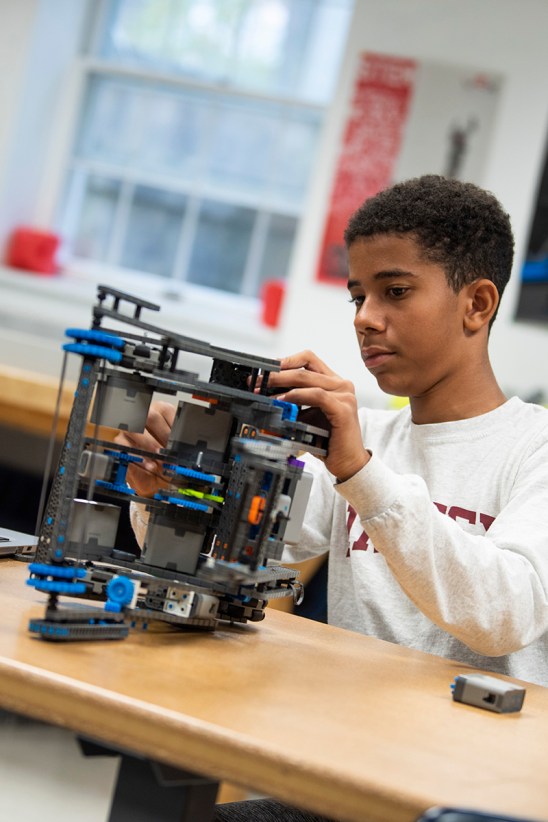
STEAM is an acronym that brings to mind thoughts of coding, 3D printers, and science experiments. It’s become a ubiquitous term that encompasses makers, techies, scientists, and most recently has been commandeered as a buzz-worthy marketing word for various educational programs. While the term encompasses each field it stands for (Science Technology Engineering Arts and Math), I’d like to expound on it with the hope of empowering all educators to find a better meaning in it and an application for it in their classrooms.
Along with others in the tech education community, I view STEAM as a mindset, rather than a collection of disciplines. Science, technology, engineering, arts, and math are tools, and the integration of any of those tools can be used to create something, solve something, or discover something. When we talk about STEAM programs for kids, we immediately think of coding, 3D printing, and general making. However, the “STEAM mindset” is one in which we use the tools available to us while deploying creativity in order to solve problems.
Let’s use 3D printing as an example. Traditionally, learning about CAD design and utilizing a 3D printer would fall under the Engineering and Technology categories within the acronym STEAM. In looking at it with a broader scope however, there is much more involved. If I were tasked to create a product that solves a problem, I would first need to understand that problem and think divergently to come up with every possible solution. This series of actions are inherently creative and design-focused because it involves exploring all aspects of a potential solution through sketching or modeling prototypes with pen and paper, playdough or legos. Once that initial process is done, a solution can be selected and modeled in CAD software, which requires math and engineering skills to complete. The actual physical use of the 3D printer falls under the technology part of the acronym, but to print detailed items successfully, one must understand the materials being used, and how temperature, humidity, etc. affect the printer’s results (incorporating science into the equation as well). All of this is to say that a project which appears to only incorporate two of the five disciplines in STEAM can easily fall into each with this kind of creative approach.
Now, what if we use the same scenario but take away a resource? Let’s say I no longer have access to a 3D printer but need to create a working prototype of my design. This scenario is where creativity in STEAM is really necessary. I’ll need to use what I have to come up with the best possible product, and to do so I’ll need to think outside the box, use whatever resources are at my disposal, iterate, and incorporate all five words in STEAM to create a good solution. This is much more realistic, and in my opinion, where innovation occurs. It’s fun to create something in a maker space with lots of tools, equipment, and materials, but in the real world, it’s rare that one will have everything he or she needs. They will have to adapt.
Over the past few years, kid’s programs have adopted the term STEAM (The Digital Arts Experience included) as the term has caught the attention of parents. With the “every child needs to learn to code” movement and countless articles being published that talk about all of the STEM jobs that exist with not enough qualified candidates to fill then, parents are more and more interested in enrolling their kids in STEAM programs. While coding, 3D printing, design, and other classes my organization offers do fall under the STEAM umbrella, we understand that technology will always be changing. And with this in mind, my belief is that it’s important to remember that involving the creative process is what makes STEAM a mindset, rather than just a catch-all buzzword for five educational subgenres. STEAM is not only about five words but the integration of those five words coupled with a creative mindset that prepares individuals to face real-world problems and create effective solutions regardless of how the tools change over time.

















